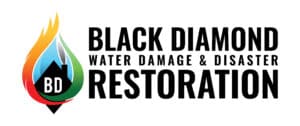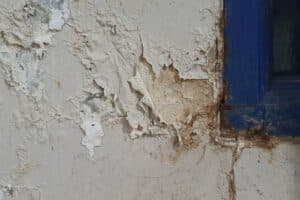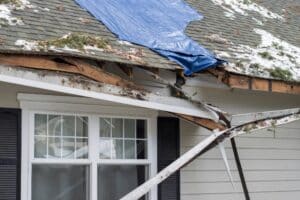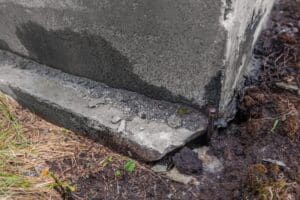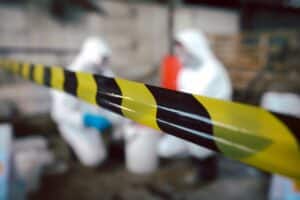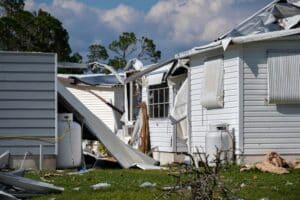When calamity strikes, the aftermath can be overwhelming, but natural disaster restoration offers a valuable pathway toward returning to normalcy.
Natural disasters are devastating events that can strike without warning. Hurricanes, fires, floods, and more have catastrophic consequences for communities and the environment. In the aftermath of such disasters, restoration is essential to rebuild and recover what has vanished.
Today, we’re sharing our comprehensive guide to natural disaster cleanup that will walk you through the complexities of natural disasters, explaining the key steps and offering advice along the way.
Understanding Natural Disasters
Before we dive into the facets of the restoration process, you must first understand the nature of natural disasters and their various forms. Natural disasters are categorized into several types:
- Tornadoes and severe storms: The United States is hit by an average of 1,300 tornadoes every year. These are violent whirlwinds that can cause sudden and severe damage, whipping out everything in their path. Tornadoes are most common in the Midwest, but they can occur anywhere in the country.
- Hurricanes and tropical storms: Hurricanes and tropical storms affect coastal areas. In the U.S., these storms commonly occur in Florida and the Gulf Coast. They bring intense winds and heavy rains that can cause damage and sometimes take years to recover from.
- Floods: Floods are one of the most common disasters in the country. Floods can happen for a variety of reasons, including heavy rain, melting snow, rainstorms, and hurricanes. Floods can disrupt transportation, damage buildings, and destroy food and crops.
- Wildfires: Wildfires can occur anywhere but usually take off in areas with dense vegetation. Wildfires are fueled by high winds and low humidity. Once a fire starts, it can spread rapidly and be incredibly difficult to control.
- Earthquakes: In the U.S., earthquakes are most common along the West Coast. Most earthquakes are small enough to not cause any damage, but some can be large enough to cause extensive destruction to property and people.
- Drought: A drought is a normal, recurring event where there is lower-than-average precipitation over a lengthy period and several seasons. Drought creates shortages in water supplies and can increase the risk of wildfires and landslides. Drought is a slow-moving event, so it tends to last much longer than other natural disasters.
Severe storms and floods are the most common types of natural disasters in the United States — in Utah, earthquakes, flooding, and wildfires claim the top of the list.
Natural disasters affect thousands of people each year. Adverse events like these can cause physical destruction and devastating loss of life. They’re usually unexpected and leave behind an overwhelming feeling of shock. People who live through such disasters often experience anxiety, trouble sleeping, constant worrying, and other forms of emotional distress.
Additional support is necessary to cope and move forward after a disaster.
What Is Disaster Restoration?
Natural disaster restoration refers to the specialized process of cleaning, repairing, and reconstructing property after a destructive event. This is a multi-phase process that involves several stakeholders, including government agencies, non-governmental organizations, local communities, and natural disaster cleanup companies.
While each type of disaster has distinct characteristics, the restoration process shares common elements across all of them. The natural disaster cleanup process can be broken down into six key phases, each with its own goals and challenges.:
1. Preparedness
Preparedness is, in many ways, the most crucial step in the disaster restoration process. Proper preparation can significantly mitigate the overall impact of a disaster and expedite restoration efforts.
Here are a few tips from the National Institute of Health (NIH) to help you prepare for any disaster that might come your way:
- Prepare supplies for at least three days: You’ve probably heard of the term “72-hour” kit. This name comes from the recommendation to prepare to be self-sufficient for at least three days in the event of a disaster. Your 72-hour kit should include the following: non-perishable food, water, a flashlight, extra batteries, blankets, pillows, tools, garbage bags, extra clothes, battery-operated radio, medicines, anti-bacterial hand wipes, first aid kit, money, and survival toiletries like toilet paper, toothpaste, sunscreen, etc.
- Practice drills: Practice drills help you and your family identify safe locations on your property for each type of emergency. Decide where you will meet if you become separated as well.
- Learn CPR: CPR is a useful skill to keep in your back pocket even if you never experience a devastating natural disaster. You can learn CPR from your local Red Cross chapter or other community organizations.
- Prepare your home: You and your family members should each know how to shut off gas, water, and electricity in case the lines are damaged. Check chimneys, roofs, walls, and foundations for stability regularly. Make sure all major furniture and appliances are securely anchored to a wall. Keep your insurance up-to-date and understand what your policy covers.
- Pets: Make arrangements for your pets if a disaster were to strike and you lose your home or become separated.
- Create a neighborhood plan: If your neighbors are willing to assist, a neighborhood disaster plan can be critical during an emergency.
2. Immediate Response
After a natural disaster occurs, the immediate response phase is activated. Rapid and life-saving measures take place to minimize casualties and provide immediate assistance. Groups like Search and Rescue might come to mind when thinking about the immediate response phase. These groups locate and rescue people or animals trapped in compromised buildings or isolated areas.
Other forms of life-saving assistance also happen during phase two. Ensuring access to medical facilities, providing medical care to the injured, establishing temporary shelters, and coordination among response teams are all examples of immediate actions taken after a natural disaster.
3. Initial Assessment
After the most pressing immediate concerns are addressed, response teams like natural disaster clean-up companies will thoroughly evaluate the affected area. This involves evaluating the extent of the damage and developing a comprehensive restoration plan to move forward. Teams will assess the damage to the infrastructure, property, and the environment.
This assessment helps all groups prioritize tasks, allocate resources, and ensure a systematic approach to natural disaster cleanup.
4. Restoration and Recovery
Restoration and recovery don’t happen overnight. This grueling phase encompasses a variety of activities, including:
- Clearing debris and hazardous materials
- Structural repairs
- Reconstruction of roofs, walls, electrical systems, roads, plumbing, bridges, and more
- Housing reconstruction
- Proving temporary housing for displaced residents
- Environmental restoration
- Economic recovery
- Social and psychological support
5. Cleaning and Sanitation
After all major repairs are complete, thorough cleaning and sanitation happen to remove any residue or contaminants from the disaster. Natural disaster cleanup companies disinfect surfaces, remove mold or mildew, and address environmental concerns related to the event. Cleaning and sanitation procedures are crucial for rebuilding safe and healthy living spaces for residents and making the area inhabitable again.
6. Mitigation for Future Disasters
The final phase in natural disaster cleanup involves implementing measures to reduce the risk of future disasters and enhance preparedness. This phase might include:
- Hazard mitigation planning
- Building codes and regulations
- Community training
- Early detection and warning systems
The Role of Natural Disaster Restoration
As you can see, many groups contribute to the natural disaster restoration process. Restoration teams are meant to repair, reconstruct, and restore any impacted structures. The primary purpose of restoration is to restore normalcy to the lives of those affected by the devastation.
Prompt and efficient restoration will help minimize the impact of natural disasters on people’s lives, properties, and communities. Timely and effective restoration helps to address these damages quickly, reducing headaches and costs.
Natural disaster restoration also plays a significant role in returning a location to its pre-disaster state. Restoration efforts should be designed to fix immediate damage and improve the strength of the affected structures and communities.
Black Diamond Restoration Is Here for You
When it comes to natural disaster restoration, trust the experts at Black Diamond Restoration to do the job right. With years of experience, a comprehensive range of services, and a commitment to excellence, we are dedicated to helping communities rebuild and recover from the devastating effects of natural disasters. Our licensed and certified professionals will help you through the restoration process, restoring your home or commercial space to exacting standards.
Discover how our team can assist you through every stage of the restoration process. From assessing damages to executing the work efficiently and safely, we have the expertise and resources to restore your property and, subsequently, your life.
At Black Diamond Restoration, we understand the urgency and complexity of natural disaster recovery; that’s why our team is available 24/7, ready to respond quickly and effectively to restore normalcy in your life. Let us guide you through the challenges, mitigate environmental and health concerns, and ensure a streamlined insurance process.
Natural disasters are an unfortunate reality of our world — choose Black Diamond Restoration as your trusted partner in rebuilding after disaster strikes. Call us today at 801.383.0964 or visit our website to learn more about our services and how we can assist you.
toto slot